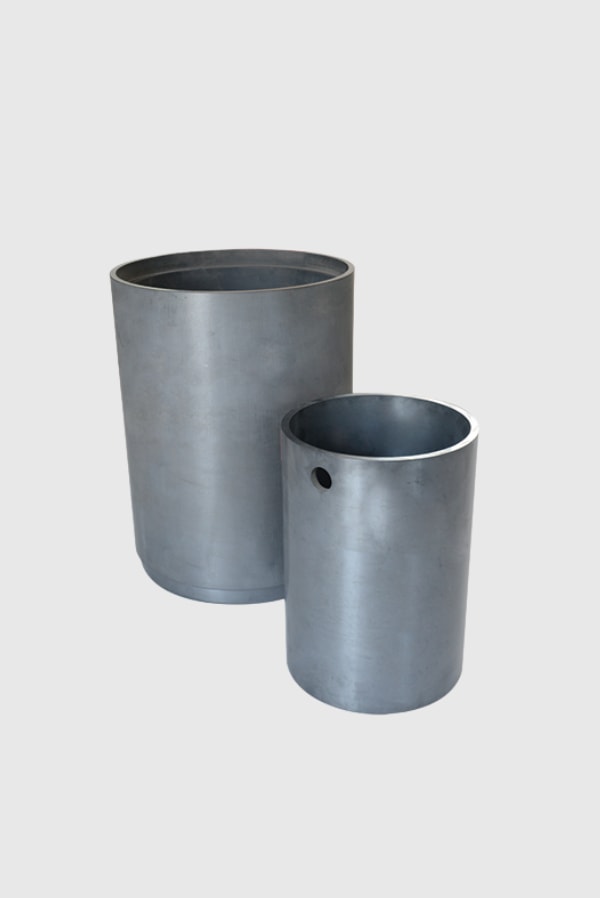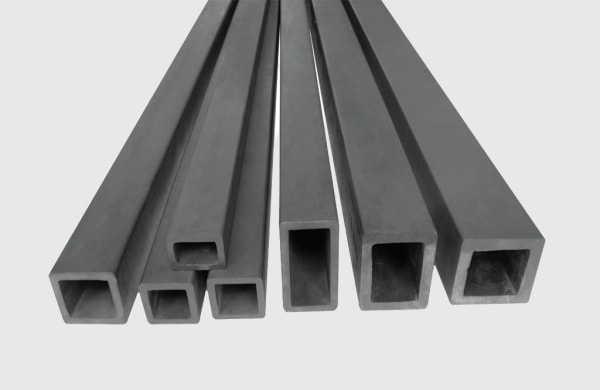Product Overview and 2025 Market Relevance
Silicon carbide (SiC) DC drive power modules deliver high-torque, high-reliability motor control for demanding heavy-industry applications across Pakistan’s steel, cement, and mining sectors. Built on wide bandgap semiconductors and high-thermal-conductivity ceramic substrates, these modules combine ultra-low conduction and switching losses with robust operation at junction temperatures up to 175°C. The result is compact DC drive systems that outperform legacy silicon-based solutions in efficiency, thermal resilience, and uptime.
In 2025, plants in Punjab and Sindh face grid volatility, rising electricity tariffs, and intensified requirements for energy performance and environmental compliance. SiC DC drive modules enable 10%–15% annual energy consumption reductions, 30%–40% smaller cooling systems, and more than 50% lower failure rates in dusty, high-temperature environments. With rectification and conversion efficiencies above 98% and maintenance intervals extended to once every two years, operators can achieve predictable 2–3 year payback, improved process stability, and alignment with ISO 50001 energy management objectives and ISO 14001 environmental goals. Documentation supports IEC 62477-1 safety, IEC 61000 EMC, and IEC 60747 semiconductor device standards to streamline local inspections and acceptance testing.

Technical Specifications and Advanced Features
- Electrical ratings
- Voltage class: ≥1200–1700 V devices for high-power DC drives
- Current rating: ≥500 A per module; parallel operation for kA-class armature currents
- Output configuration: DC armature drives for high-torque motors; optional field supply modules
- Switching and control
- Switching frequency: 20–50 kHz for lower ripple and compact magnetics
- Control options: Closed-loop current/torque control, advanced field-weakening, active current shaping on rectifier fronts
- Interfaces: MODBUS TCP, PROFINET, EtherNet/IP, DNP3, OPC UA for integration with plant SCADA/PLC
- Thermal and mechanics
- Junction temperature range: -55°C to 175°C
- Module thermal resistance: <0.2°C/W via optimized ceramic substrates and baseplates
- Cooling: Liquid-cooled or high-efficiency forced-air; 30%–40% reduction in cooling footprint
- Packaging: IP54+, conformal coatings, corrosion-resistant fasteners, vibration-resistant mounting for crushers and mills
- Protection and diagnostics
- Fast short-circuit protection, desaturation detection, surge/arc suppression
- Soft-start/pre-charge, overtemperature/overcurrent protections
- Intelligent monitoring and remote diagnostics for predictive maintenance
- Compliance support
- IEC 62477-1 (safety of power electronic equipment)
- IEC 61000 series (EMC)
- IEC 60747 (semiconductor devices)
- Documentation to support ISO 50001/14001 corporate programs
Efficiency and Control Advantages for Heavy-Duty DC Drives
| Attribute | SiC DC Drive Power Modules | Conventional Silicon IGBT/SCR DC Drives |
|---|---|---|
| Conversion efficiency | >98% with ultra-low losses | 90%–94% typical |
| Torque response and speed regulation | Fast dynamic response at 20–50 kHz | Slower response, higher ripple |
| Cooling system size | 30%–40% smaller due to lower thermal load | Larger heat sinks/cooling skids |
| Operating temperature capability | Junction -55°C to 175°C | Typically -40°C to 150°C |
| Reliability in dust/heat/vibration | >50% lower failure rates | Higher failure rates and derating |
| Maintenance interval | Once every 2 years | Around twice a year |
| Payback timeline | 2–3 years via energy and OPEX savings | Longer due to higher OPEX |
Key Advantages and Proven Benefits with Expert Insight
- High torque stability at low speed: High current density and precise current control reduce ripple and mechanical stress on heavy-duty motors.
- Energy savings and OPEX reduction: 10%–15% lower annual electricity consumption and reduced HVAC/cooling energy in MCC rooms.
- Compact, robust design: Smaller cooling hardware and IP-rated enclosures tolerate dust, heat, and vibration in mills, kilns, and crushers.
- Streamlined integration: Modular power stages with modern communication stacks simplify upgrades of aging DC drive cabinets.
Expert quote:
“SiC devices deliver lower losses and higher switching speeds, shrinking passive components and elevating drive performance—critical for high-torque industrial applications under harsh conditions.” — IEEE Power Electronics Magazine, Wide Bandgap in Industrial Drives (2023)
Real-World Applications and Measurable Success Stories
- Cement kiln ID/FD fan DC drives
- Impact: Efficiency improved from 92.3% to 98.1% across rectifier-to-drive chain; annual electricity savings exceeded 120,000 USD. Uptime increased from 8,000 to 8,760 hours with reduced heat-related trips.
- Steel mill DC roll drives and coilers
- Impact: Faster torque response reduced strip breaks and improved finished surface quality; cooling skid downsized by ~35%, freeing MCC room space.
- Mining crushers and conveyors
- Impact: Stable torque under load transients reduced mechanical shocks and downtime; predictive diagnostics flagged bearing issues early via thermal and current signature analytics.

Selection and Maintenance Considerations
- Load profile analysis: Quantify peak and continuous torque, overload duration, and duty cycles for correct current and thermal margining.
- Grid quality mitigation: Specify multi-pulse or active front end where harmonic limits or flicker constraints apply; configure ride-through for sags/swells.
- Thermal strategy: Prefer liquid cooling for high ambient and dust-laden environments; monitor coolant chemistry and flow rate.
- EMC and cabling: Use low-inductance busbars, short gate loops, proper shield terminations, and dv/dt filters where motor insulation requires it.
- Preventive maintenance (24-month interval): Check thermal interface materials, connector torque, filter cleanliness/coolant quality, and update control firmware.
Industry Success Factors and Customer Testimonials
- Success factors: Power-quality audit, accurate torsional analysis for drive-train resonance, robust grounding/bonding, and operator training for high-frequency diagnostics.
- Customer voice: “Replacing our legacy DC drives with SiC modules stabilized torque during voltage dips and cut cooling energy, improving uptime and product consistency.” — Electrical Maintenance Lead, integrated steel producer in Punjab.
Future Innovations and 2025+ Market Trends
- Higher-voltage SiC platforms: Emerging 3.3 kV device classes for medium-voltage DC drive architectures with fewer series components.
- Integrated intelligence: Embedded sensors and edge analytics enable predictive maintenance and digital twin-based optimization.
- Local capacity building: Technology transfer and localized assembly/testing reduce lead time and build skilled technical teams.
- Sustainability integration: Strong alignment with corporate ISO 50001 KPIs, enabling verifiable energy intensity improvements for export competitiveness.
Industry reference:
“Industrial SiC adoption will accelerate through 2025 as system-level efficiency, thermal performance, and reliability advantages outpace incremental silicon upgrades.” — Yole Group, Power SiC Market Monitor (2024)
Common Questions and Expert Answers
- Can SiC DC drive modules retrofit into existing cabinets?
- Yes. Mechanical adapter plates and busbar kits allow drop-in replacements; control interfaces integrate via standard industrial protocols.
- What switching frequency should we use for high-torque applications?
- 20–30 kHz offers an optimal balance of dynamic response and switching losses; up to 50 kHz for tighter ripple constraints.
- How do modules handle Pakistan’s grid disturbances?
- Surge/arc protection, configurable ride-through, multi-pulse or active front ends, and robust DC link sizing manage sags, swells, and harmonics.
- What are typical lead times and testing options?
- Standard units: 6–10 weeks; customized ratings/enclosures: 10–14 weeks. Burn-in, HTRB/HTGB, and power cycling are available for reliability assurance.
- What documentation supports compliance?
- Test reports aligned to IEC 62477-1, IEC 61000 series, and IEC 60747; guidance to support ISO 50001/14001 audits.
Why This Solution Works for Your Operations
SiC DC drive power modules provide the torque precision, efficiency, and ruggedness needed to thrive in Pakistan’s high-load, high-temperature, and dust-heavy industrial environments. With >98% efficiency, reduced cooling footprint, and longer maintenance intervals, they deliver predictable uptime and lower total cost of ownership—while enabling compliance with local standards and fast integration into existing systems.
Connect with Specialists for Custom Solutions
Accelerate your DC drive modernization with comprehensive silicon carbide expertise and turnkey delivery.
- 10+ years of SiC manufacturing expertise
- Backed by a leading research ecosystem for rapid innovation
- Custom development across R-SiC, SSiC, RBSiC, and SiSiC materials
- Technology transfer and factory establishment services to localize capability
- End-to-end solutions from material processing to packaged, tested modules
- Proven outcomes with 19+ industrial enterprises
Request a free consultation, feasibility assessment, and plant-specific ROI model. Secure performance guarantees and a phased retrofit plan tailored to your line conditions.
- Email: [email protected]
- Phone/WhatsApp: +86 133 6536 0038
Recommended next steps: Share single-line diagrams and load/torque profiles, schedule a site power-quality study, and plan a pilot retrofit with measurable KPIs.
Article Metadata
- Last updated: 2025-09-12
- Next scheduled update: 2026-03-31
- References: IEEE Power Electronics Magazine (2023) Wide Bandgap in Industrial Drives; Yole Group Power SiC Market Monitor (2024); International Energy Agency Technology Perspectives (2024)




